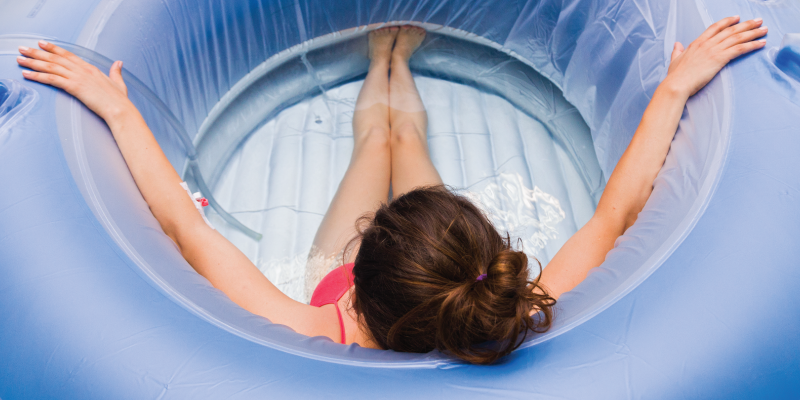Water births–are they new-wave hippie trends or are they truly the “natural epidural”? With so many options for birthing choices and birth plans, we know it can seem overwhelming. While giving birth to your little one in a tub can feel a little strange and scary, we’re here today to break down water births and clear the air!
Water births are, quite simply, when a woman gives birth in a tub or other pool of water. It is often chosen as a more “natural” birth, and occurs without any medication. So before you choose a water birth as your path, make sure you’re 100% ready to make that choice.
Keep in mind that water births are meant as a natural labor pain relief tactic. Because water births increase buoyancy, they promote more efficient uterine contractions and improved blood circulation. This is great for both mamas and babies. Even better, they can make your perineum more relaxed and elastic, which helps prevent tearing.
How They Work
Similar to a hospital birth, after labor begins and your water breaks, you’ll head to your facility/healthcare provider to begin the process under the direction of your midwife. She will prepare you birthing pool for you, and once you get in, you’ll likely find the ease of motion much more pleasant than being restrained to a bed.
Pushing can also be easier with the buoyancy. Once your little one makes an entrance into the world, she will immediately be brought to the surface, yet slowly as to avoid shocking your new arrival or tearing the umbilical cord. From there, you can choose to have baby cleaned or let the fluids absorb into the skin.
Are There Risks?
Any birth plan comes with its fair share of risks, and water birth is no different. Of course, that risk is heightened when there are no medical professionals present, so we would always recommend a water birth guided by a trained and certified professional. Always discuss your options with your healthcare provider.
Tearing of the umbilical cord. As mentioned above, this is why baby is slowly brought to the surface. An uncommon risk, your midwife will be trained to notice and act accordingly, including the clamping of the cord. Very rarely does an umbilical cord tear lead to fetal blood loss.
Infection. As water birth requires you to be in a stagnant pool of water, it is imperative that both the tub and the water are sterilized. However, even then, bodily fluids and discharge will be present as soon as you sit in the pool. There is a chance of baby ingesting that, which can lead to infection.
Again, be sure to discuss all risks and options with your healthcare provider–it’s good to know all risks that come with any birth plan, and have a strategy in place to avoid them. When creating your birth plan, water births can be a great option, especially when discussing pain management without medication. Good luck from all of us at Bump Boxes!
Join the other 1,000,000+ expecting mamas who love Bump Boxes.
